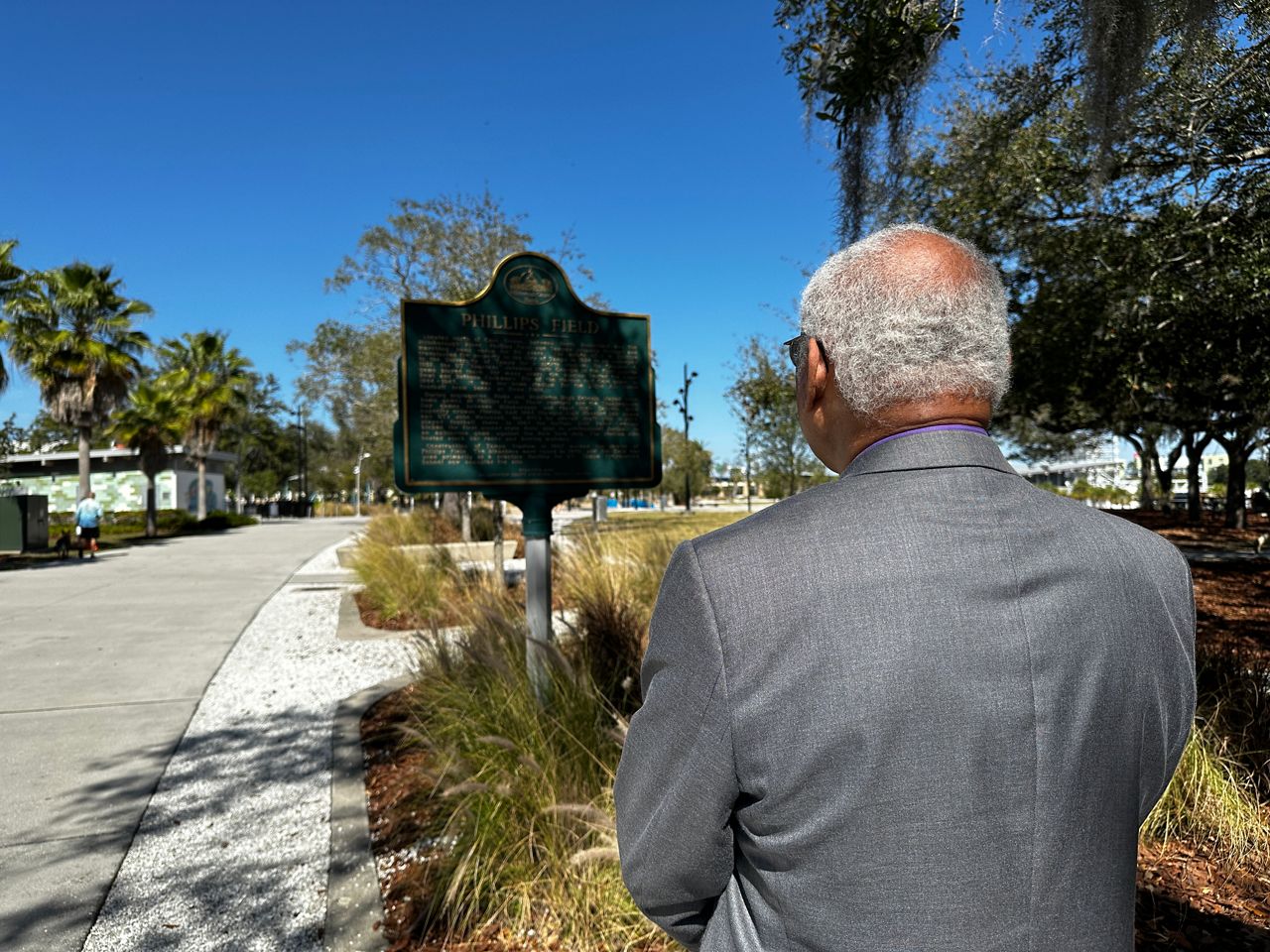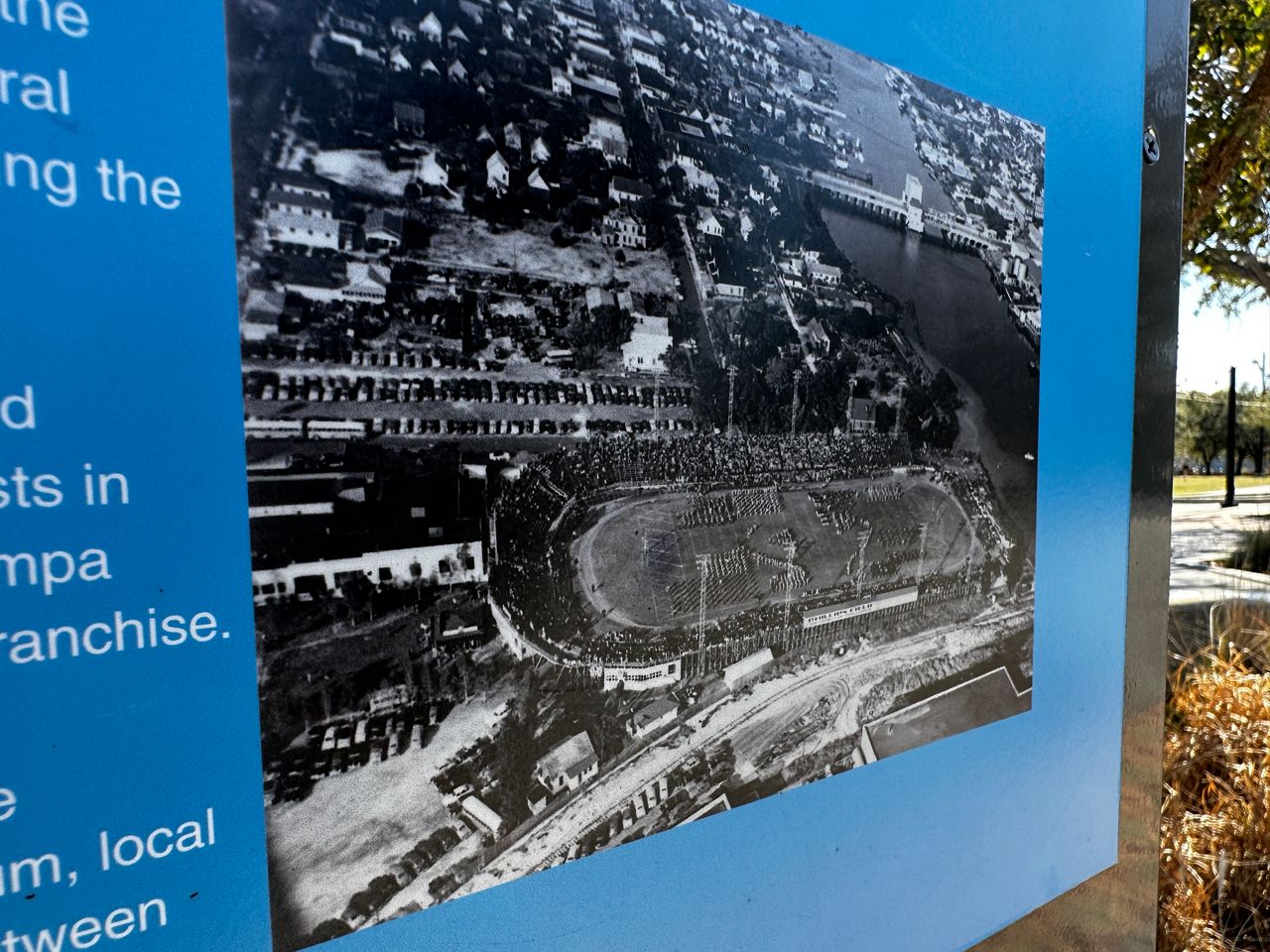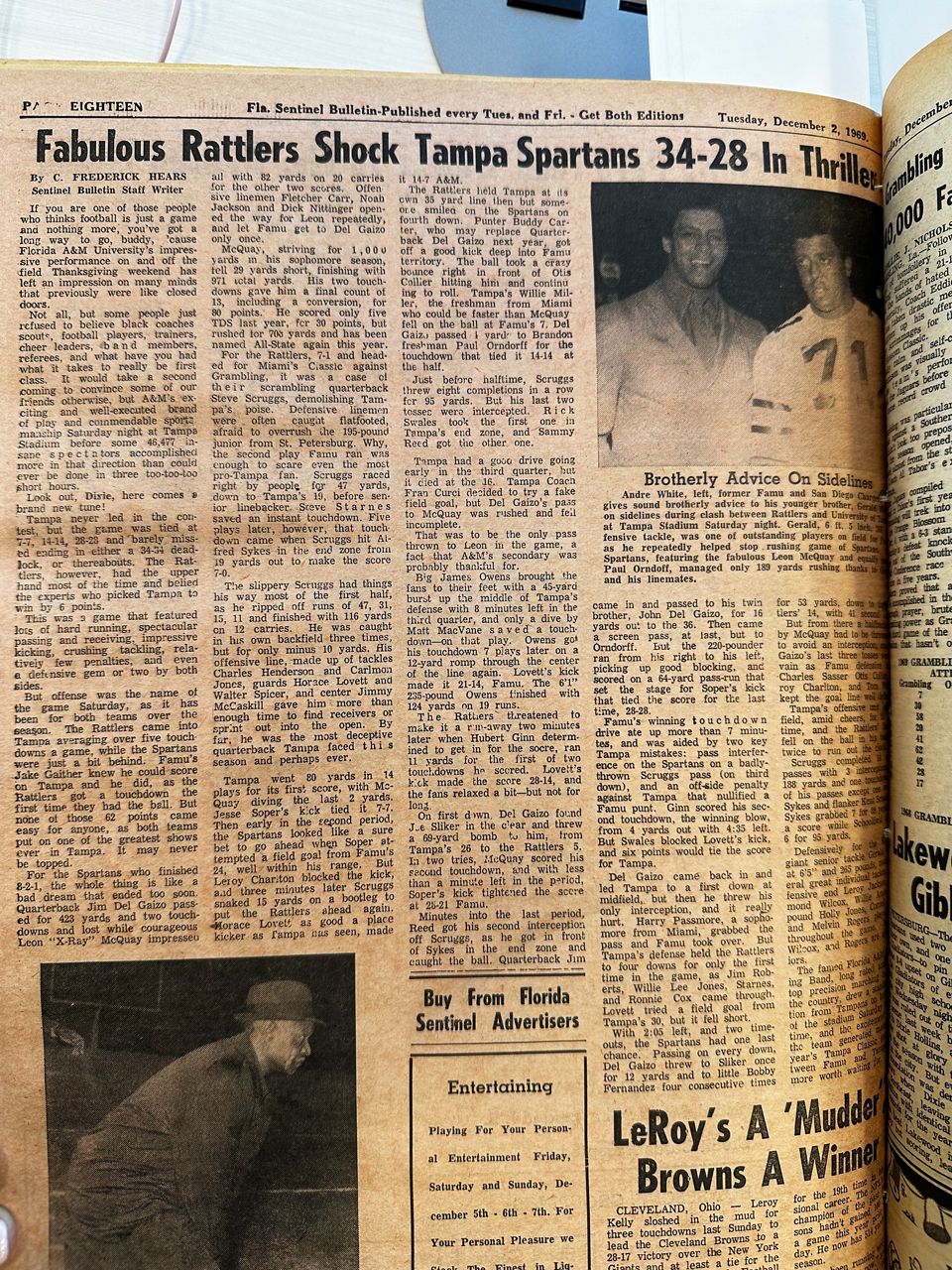TAMPA, Fla. — There was a time when the game of football looked very different than what we are used to today — no, not the sport itself — but the players on the team.
Reading from the article he wrote back in 1969, Fred Hearns, sports writer and curator of Black History at the Tampa Bay Historic Center said, "Not all but some people just refuse to believe black coaches, scouts, football players, trainers, cheerleaders, band members, referees, and what have you had what it takes to really be first class."
Hearns did not just write about history, he lived it.
"A lot of people walked. If you lived in West Tampa, you lived within walking distance. I lived in East Tampa, I grew up in East Tampa." he said.
Of course, a lot has changed from when he was growing up.
Remembering the good 'ole days he said, "West Tampa looks so much different the West Tampa from the 1940's, 1950's, and the 60's. I don't think you can go in any part of Tampa today and say that this looks so much like it looked 50, 60 years ago, with the possible exception of parts of Ybor City."
Hearns loved playing sports, and he also loved writing about them, whether it was high school, college, or professional sports.
There's very little in sports history he doesn't recall.

"In the 1960's up until the late '60's, black high school could only play other black high schools and that's the way it was all over the state of Florida," Hearns said. "In order to play 10 games, we'd have to travel to Miami, to Fort Lauderdale, to Jacksonville, to Orlando, of course, to St Petersburg, Lakeland, that's how we played a 10-game schedule, by traveling."
There was only one place in Tampa where African American football was played — Phillips Field.
"The games would normally start at 7 o'clock. We would have both stands filled on the East side and on the West side and it was just a wonderful time when although we were living in a segregated society, we took the lemons and made lemonade," Hearns said. "We made the best with what we could do, with what we had to work with."
Phillips Field was also where the University of Tampa's football team practiced.
A lot of big names stepped on this field.
"John Matuszak played here, from University of Tampa," he said. "The number one NFL draft pick in 1973, out of all football, the top draft pick in 1973 came from the University of Tampa, John Matuszak and they practiced here at Phillips Field and played at the Tampa Stadium."
What's left of Phillips Field is now a placard, in the middle of the Julian Lane Riverfront Park in downtown Tampa.
Hearns said the writing doesn't even begin to describe the history that unfolded in this dirt.
"I think about youth and how, in many cases, we don't realize the significance of the experiences that we have. Of course, we didn't know that we were on the threshold of integration and what that would mean," he said.

It would mean an even playing field for both blacks and whites on the football field.
"Standing here is emotional," he said. "'Cause this is where it all happened for me and I can remember on those Friday nights, coming down here for a football game and I played on the band at Middleton. So, we'd come in and then we'd have our band uniforms on, and when we'd step out on that field, it was just amazing. It's almost like what I lived for, I lived for those Friday nights."
In 1967, another stadium opened in Tampa that would compete with Phillips Field.
The Tampa Stadium, which is now a parking lot behind Raymond James Stadium, became home to a college football game in Tampa that would integrate the game for blacks and whites on a football field for the first time.
The University of Tampa, a predominantly white college, and Florida A&M University, a predominantly black college, would come together for a night that would forever be etched in history.
While Hearns reported on the game, former Miami Dolphins quarterback Jim Del Gaizo suited up as the quarterback for the Spartans.
"The night we got there, I remember coming on the field that night and it was electricity. I mean, the crowd was a gigantic crowd, and it was just the anticipation and when I say electricity, I say good anticipation," Del Gaizo said. "There was nothing bad going on in that crowd. It was all good and you can feel it. I would get goosebumps just coming on the field, I would say that."
He said back then the team didn't understand the significance of the game they were playing, they had something else in mind.
"Well, we were trying to win nine games in a row," he said. "We had lost our first game then we'd won eight and we wanted to go out with a win."
He understood later on.
Florida A&M defeated UT 34-28 that night in front of a crowd of over 46,000 fans who watched history unfold.
"It was spectacular," said Del Gaizo. "It was spectacular and from what Jake Gaither and Fran Curci wanted to achieve, they achieved it."
Inside the press box, a young Fred Hearns continued to write.

Once again reading from his article, Hearns read, "Florida A&M's exciting and well-executed brand of play and commendable sportsmanship Saturday night at Tampa Stadium before some 46,477 insane spectators accomplished more of that dream that could ever have been done in the two, two short hours."
As stated previously, Hearns didn't just write about history, he lived it and he remembers everything, every time he walks out onto the Raymond James Stadium parking lot.
"Coming out here sort of brings back to memory just how far we have come," Hearns said. "When I come and I see the University of South Florida Bulls playing here and I see the students enjoying themselves and I wonder to myself. I wonder do they have any idea the sacrifices. If anyone asks me what it was like back in the days of segregation, and I do get that question when I visit schools, I'm happy to tell them again, we took the lemons and made lemonade."



